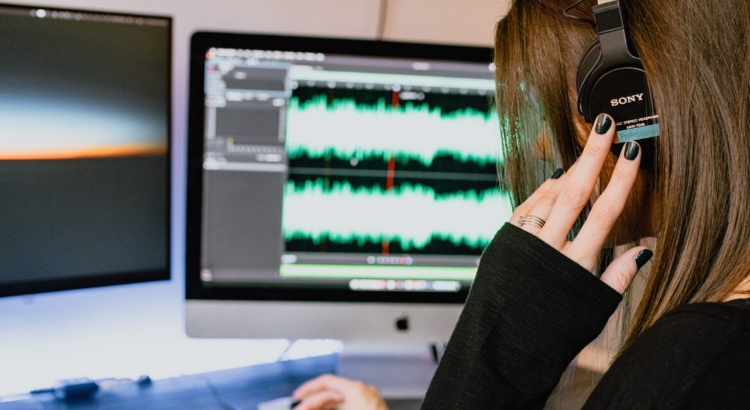Essential Equipment for Professional Transcriptionists: Tools You Need in 2024
Transcription offers flexible work opportunities and promising income. Whether you are a full-time transcriber or a freelancer, being able to type quickly while listening is important. However, speed alone is not enough—you also need the right equipment to do the job well.
In the past, transcribers worked with cassette tapes and bulky machines. Today, digital tools have made transcription faster and easier. Let’s look at the key equipment every transcriptionist needs and how these tools can help boost your efficiency and accuracy.
What Is a Transcription Machine?
A transcription machine is a device or software designed to help you turn audio or video recordings into written text. While many jobs now use digital tools, traditional machines are still used in some fields.
- Transcription machines help you pause, play, rewind, and fast-forward audio easily.
- They are made to make typing while listening much more efficient.
- Despite advances in technology, a skilled human transcriber is still needed for the most accurate results.
Why Do Transcribers Need Specialized Equipment?
Many industries depend on transcription, including:
- Legal
- Medical
- Journalism
- Academia
- Market research
- Entertainment
Without good tools, transcription can be slow and stressful. Modern transcription services use technology to make the process smoother and improve output speed. Better equipment also means improved audio quality and fewer mistakes.
Key Tools for Every Professional Transcriber
If you want to work faster and with fewer errors, the right transcription kit is vital. Here’s what you need:
Traditional Equipment for Transcription
Some clients still work with cassette tapes. If you need to handle these, you’ll need traditional equipment:
- Micro-cassette transcriber: Lets you play back tapes and control audio while typing.
- Foot pedal: Allows hands-free control to start, stop, or rewind audio. This can increase your typing speed by up to 50% (TechSmith, 2023).
- Headset: Helps you listen for every word, even in poor audio quality.
Choosing the Best Headset
- Over-ear headphones: Offer great noise-canceling and can be worn comfortably for hours.
- On-ear headphones: Rest on your ear and can be comfortable for shorter periods.
- In-ear headphones (earbuds): Good for portability, but not for long sessions.
- Wireless headphones: Helpful if you need to move around, but sometimes less reliable than wired options.
Modern Digital Equipment
Most transcriptionists today use digital tools. These help handle files faster and more securely:
- Computer: Desktop or laptop, depending on where you work. Desktops are more robust; laptops are portable.
- Mechanical keyboard: Easier on the hands for long hours of typing and reduces the risk of injury.
- Dual monitors: Makes multitasking easier—viewing audio playback, typed text, and research material at the same time.
- High-speed internet: Essential for downloading large audio and video files. Most files are now digital, and faster internet streamlines your workflow.
- Transcription software: Digital programs allow easy playback control (play, pause, slow down, rewind) and can be synced with a foot pedal for efficiency.
- Word processing software: Microsoft Word or Google Docs is needed to type out transcripts.
If you want to explore advanced software options, you may also consider using automated transcription tools and secure AI transcription subscriptions for faster initial drafts.
Helpful Accessories
- Text expander: Automatically expands abbreviations into full words or phrases. Especially helpful for typing commonly used or technical terms in legal or medical transcription (International Journal of Computer Science, 2022).
Additional Services for Professional Transcription
Transcription sometimes goes beyond typing audio into text. You might need to add captions or subtitles for videos. Here are some essential services you might consider:
- Closed captioning for accessibility compliance
- Subtitling services for international projects
- Text translation for global audiences
- Audio translation services when converting speech in one language to written text in another
If you want to ensure perfect grammar and wording in your transcripts, professional transcription proofreading services are also available.
Costs and Pricing
The cost to set up your transcription workspace depends on the quality of equipment you choose. Basic gear is usually affordable, but some add-ons, like mechanical keyboards or high-end headphones, may cost more.
- Professional transcription pricing depends on turnaround time, file length, and any extra services (such as captions or translations).
- See current captioning services pricing for accessible video projects.
Conclusion: Get Accurate Transcripts with GoTranscript
Choosing the right equipment can help you do transcription work faster and better. However, getting top-quality, error-free transcripts requires more than just the latest gear. Many professionals and organizations trust GoTranscript for transcription services that meet the highest accuracy standards. With options for automated transcription, closed captioning, subtitles, and more, you can get reliable results no matter the job size.
- Order transcription now in just a few clicks.
- Need video captions? Order captions today.
Let GoTranscript help you achieve professional accuracy for all your transcription, captioning, and translation needs.



















 Verified Order
Verified Order